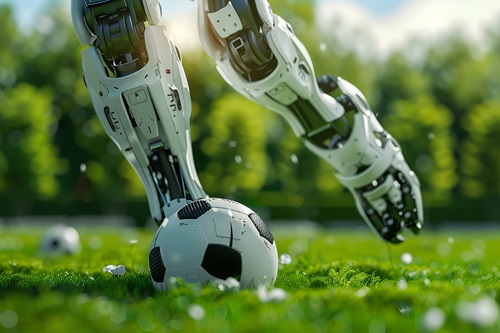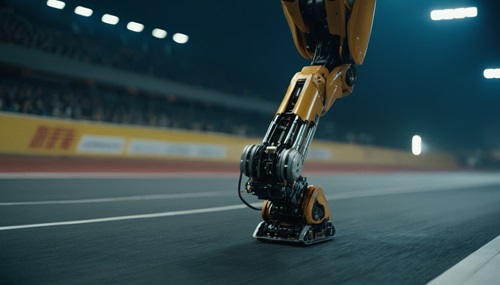
Photo © Kittipong Jirasukhanont | Dreamstime.com
What happens when robots go up against one another, as well as against human athletes, on the field of play? And in China, a leader in tech?
Well, for one thing, we sometimes learn that technology still has a long way to go.
According to Inside The Games, some humanoid robots lined up at the starting line in Beijing for what has already been dubbed the world's first humanoid half-marathon. Held in the high-tech enclave of Yizhuang, the race wasn't just a spectacle of Chinese prowess in artificial intelligence and robotics; it served, above all, as a real-world test of stamina, autonomy and technological maturity.
While none of the androids came close to matching human race times (the men's human champion completed the 21K distance in just 1 hour and 2 minutes while the top robot took more than twice that time), the fact that a few of the robots actually finished the course was considered a win.

Not all machines had the same level of success in the race, noted NBC News: “Some of the robots barely got started. One, designed with a woman’s body and face, collapsed moments after getting started, sending a group of engineers rushing to its side with laptops. Another that was mounted to a platform with propellers crashed into a barrier. A robot the size of a young child succumbed to a glitch and simply lay down on the starting line.”
The race drew international attention – and more than 20 companies entered their robots, resulting in an atmosphere best described as electric.
“As the starting siren echoed through the air, the first batch of robots jogged ahead, their metal legs thumping loudly against the track. The tallest robot was 5 feet, 10 inches, while the shortest, nicknamed “Little Giant,” measured less than 2½ feet and drew cheers from the crowd as it swaggered past and waved enthusiastically.
Some robots ran smoothly like humans while others had stiffer, more mechanical movements. Each also had a unique style: Some had lifelike skin and hair, others wore clothes and a few ran in sneakers.”
A week later, China was at it again, this time with a multi-sport event known as the Robolympics, where AI-powered robots competed, this time against one another (no human athletes) in sports like running, two-on-two soccer (watch a video snippet here), combat sports and dance routines.
Inside The Games noted, “In the sprints, robots tore down tracks, their movements fine-tuned for maximum speed, while a rugged cross-country course tested their ability to overcome natural obstacles like grass, water, slopes and barriers, a true trial of their mobility and real-world navigation skills.”
Basketball contests were also held, with robots demonstrating autonomous dribbling, movement and sharp shooting accuracy. The combat events were a dramatic highlight: robots (reinforced with metal frames and ultra-flexible joints) spun, dodged and struck with mechanical precision.

Other competitions featured everyday tasks like lifting boxes and smart object grasping. Simulated rescue missions were also demonstrated. It was noted that “robots demonstrated astonishing dexterity, rotating their metal fingers 360 degrees and displaying grip strengths up to ten times greater than that of a human.”
The China Electronics Society, which organized the Robolympics, said the robots were evaluated on criteria like gait optimization, battery performance, cognitive computing and even facial recognition abilities.
“Though these mechanical athletes won't be biting their medals anytime soon,” noted Inside the Games, “their feats are a powerful preview of a future where AI and human ingenuity drive each other to new heights.”

